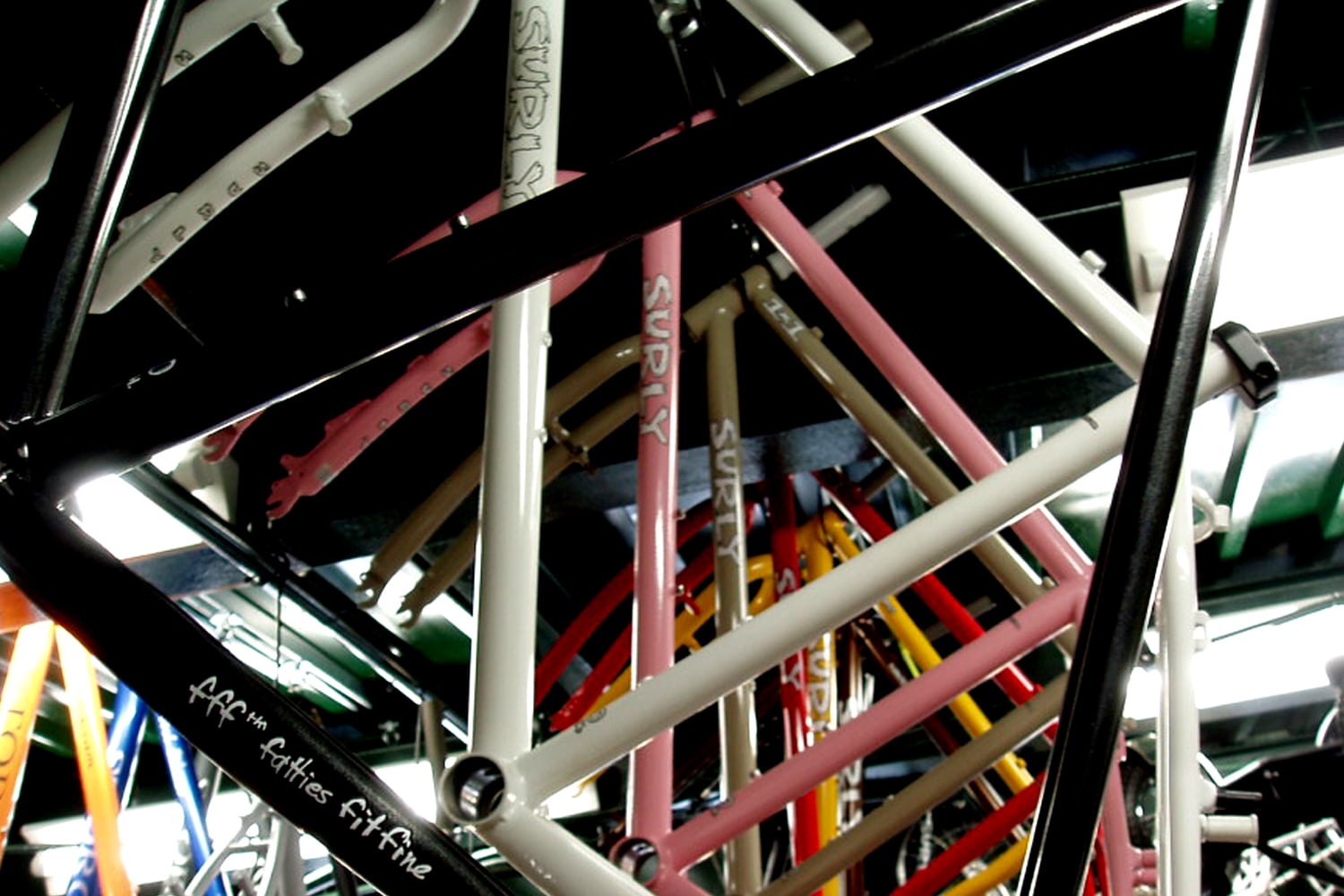
Tire Clearance And Your Surly Frame
Tires are a big deal. You can have a totally dialed bike with all the fanciest parts under the sun but if your tires aren’t firing on all cylinders, the whole ride can be turned into a serious bummer, nay, an early funeral if things go real bad. After all, tires are your bicycle's interface with whatever surface you chose to ride and different surfaces require different tread patterns, pressures and widths. If one of those things is off, things could get a bit loose. Sometimes that’s a lot of fun. Other times, it hurts a lot. It’s good to take the time out to think about how you want your bike to interface with the ground. What sort of tread do you need? What sort of tire pressure will work the best? Are you going to be sinking into the soft stuff, or saddling yourself with the unnecessary burden of tires that are too wide? Can a tire actually be too wide?
One of the questions that frequently echoes through the halls of the Surly Mothership is; “will such and such tire fit in such and such frame?” The answer to that question is generally along the lines of, if it is a Surly frame and you’re using the wheel size it was designed around, there’s an excellent chance the tire you’re talking about will fit. If you’re using a wheel size that the frame wasn’t designed for like, say, a 650b wheel on a LHT frame, there’s a chance but there’s no way for us to know because we didn’t design the bike for that wheel size. Maybe? Give it a try, you seem like a smart cookie.
Tire fit on Surly frames isn’t usually an issue because tire clearance is one of the five pillars of the Surly Design Philosophy, but anyone that has ever messed around with a good sample of tires from different manufacturers knows that, just because it has a number on the side doesn’t mean it’s going to measure out the same as another brand. Tire manufacturers will use different points on the tire to take their measurements so there can be confusion if you’re trying to fit tires into frames that, unlike us, don’t put such a high importance on having a lot of tire clearance. And we all know, bicycle tires can get pretty damn expensive so when you buy them you want to know that they will fit in your frame.
That covers tire size, but how exactly do we figure out frame clearance? That’s a little easier. When we design a frame we go into it not just with the nebulous declaration that it must be able to fit humungous tires, we have an idea of what size wheel and tire this frame will work best with and that’s all part of our design process. We put a lot of thought into tire size and the effect it will have on the handling of any bike. Many of our fat bikes and trail bikes are great examples of this concept because tire size plays such an important role in how you perceive the handling of your bike. This is clearly the reason we didn’t put 650Ax23mm tires on the Instigator 2.0, but instead developed our own tire size, 26+ (a 26 x 2.75” tire on a 50mm rim).
Many an armchair engineer and late-night garage tinkerer have discovered that, because we’re such fans of big tires, many of our frames will not only fit huge tires, but slightly narrower tires of larger wheel diameters, or yet fatter tires of smaller wheel diameters. Let’s look at the venerable 1x1 for this example. On our website, we list the tire clearance for the 1x1 frame and fork as 26 x 2.75.” So what does this really mean? Does it mean that you could probably throw a 27.5 x 2.1” wheel/tire combo in your 1x1? I dunno (shrug). We designed it for 26” wheels so that’s what we’re sticking with. Yeah, 27.5” wheels are all the rage now, but we made that bike to be ridden with 26” wheels so if you want to get into the double black diamond, completely out of bounds, at your own risk behavior of installing different wheel sizes on your bike, hey man, that’s your thing. All I’m gonna say is that it’s gonna mess with your bottom bracket height and the center of gravity of your bike and it might handle kinda stupid.
With bikes, framesets and forks, we list the “least common max tire clearance of any particular component”, that is, whichever component has the least “max tire clearance” is what is listed as the “max tire clearance”. Additionally, we only list the max tire width of the tire “type” it was designed to work with.
For example, on the 1x1 frameset we list 26 x 2.75” as max tire size. That is what fits in both the frame and the fork, even though the fork will fit up to a 26 x 3”. Now tinkerers, magicians, and engineers (amateur or professional) also know (or could deduce) that the 1x1 will fit many 650b knobby tires, and even some 29”er mountain tires, but we do not list those max tires clearances, because the 1x1 is designed for 26” treads.
So that's about it for now. If you want to know the max tire clearance of a particular bike or frame, simply head over to the bike model's page, scroll down to the Spec & Geo section and reference the frame spec chart. There you will find official information on the max frame and fork tire clearances. Below is an example from the Bridge Club's Page. Arrows included for convenience.